 |
Disposals Not Chargeable To Tax |
| << Computation of Capital Gain |
| TAX RETURNS & ASSESSMENT OF INCOME UNIVERSAL SELF ASSESSMENT SCHEME >> |
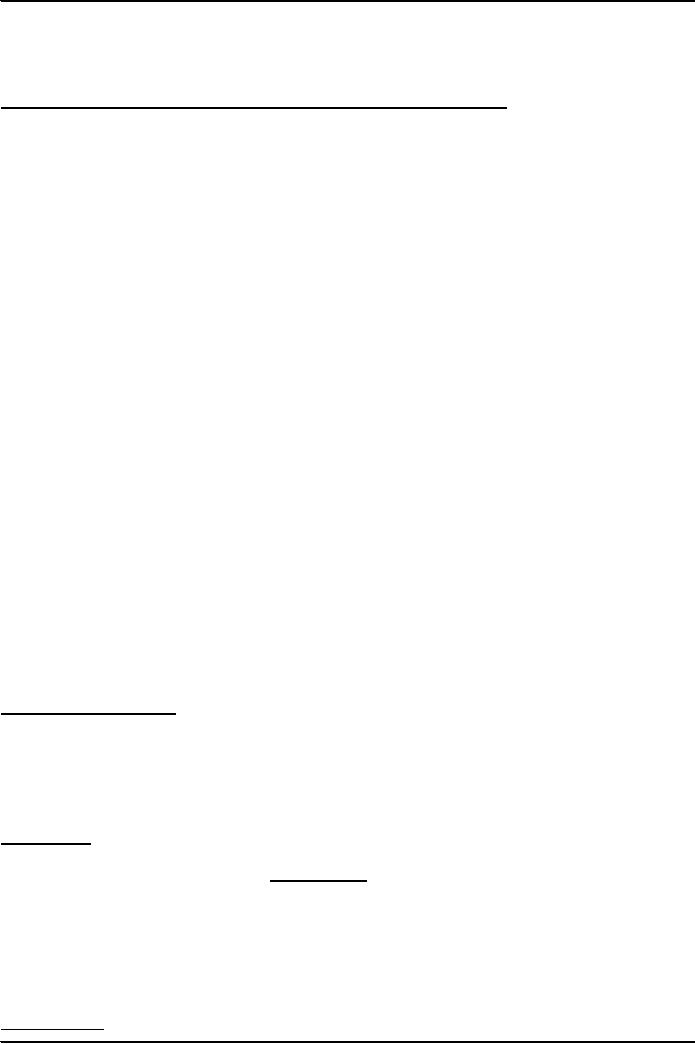
Taxation
Management FIN 623
VU
MODULE
9
LESSON
9.39
CAPITAL
GAINS
Disposals
Not Chargeable To Tax Under
Sec.79 Non Recognition
Rules
No
gain or loss shall be taken
to arise on the disposal of an
asset:
Between
spouses under an agreement to live
apart;
By
reason of the transmission of the asset
to an executor or beneficiary on the death of
person;
By
reason of a gift of the
asset;
By
reason of the compulsory acquisition of the
asset under any law where
the consideration
received
for the disposal is reinvested by the
recipient in an asset of a like kind
within one year of
the
disposal;
By a
company to its shareholders on
liquidation of the company; or
By an
association of persons to its
member on dissolution of the association
where the assets are
distributed
to members in accordance with
their interests in the capital of the
association
Exemptions
in
respect to capital gains
have been outlined in
various clauses of Part 1 of
Second Schedule.
Exemptions
as Contained in Second
Schedule
Clause
(110) Any
income chargeable under the head
"capital gains", being income
from the sale of
Mudarba
certificates or any instrument of
redeemable capital as defined in the
Companies Ordinance, 1984,
listed
on any stock exchange in
Pakistan or shares of public
company and the Pakistan
telecommunication
corporation
vouchers issued by the Government of
Pakistan derived by a tax-payer.
Clause(111)
any
income chargeable under the head
"capital gains" being income from the
sale of shares of
a
public company derived by any
foreign institutional investor as is approved by the
federal Government
for
the
purpose of this clause
Clause
(112) omitted.
Clause
(113) any
income chargeable under the head
"capital gains" being income from the
sale of shares of
a
public company set up in any
special industrial zone referred to in
clause [126] of this schedule,
derived
by a
person for a period of five
years from the date of
commencement of its commercial
production:
provided
that the exemption under this clause
shall not be available to a
person from the sale of
shares of
such
companies which are not
eligible for exemption from tax under
clause (126 ).
Clause
(114) any
income chargeable under the head
"capital gains " derived by a person
from an industrial
undertaking
set up in an area declared by the
Federal Government to be a "Zone"
within the meaning of
the
export processing zone
Authority Ordinance 1980.
Clause(114A)
any
income chargeable under the head
"capital gains", derived by a person
from sale of ships
and
all floating crafts
including tugs, dredgers,
survey vessels and other
specialized craft up to tax year
ending on the
thirtieth day of June
,2011]
Exercise
on Capital Gain
Exercise-1:
On 1st July 2006, the Govt.
prohibited the sale of plastic
bags through an Ordinance and
took over the
machines
of M/s WW Ltd; amounting Rs. 1,000,000/-.
As a compensation package the Govt. paid
Rs.
2,500,000/-
to the Company. The company
purchased new machines of the
related business on 1st April
2007
costing the company Rs.
4,000,000/-.
Calculate
gain on disposal and also
explain whether this gain is chargeable
to tax.
Solution
E 1:
Considerations
received (A)
Rs.
2,500,000
Cost
of Acquisition
(B)
Rs.
1,000,000
Capital
Gain = (A B)
Rs.1,500,000
Although
there is gain of Rs.1,500,000/ on
disposal but it is not
chargeable to tax since amount of
consideration
received has been invested
in the like business during
one year of disposal.
Exercise2:
On
01/01/2004 Mr. Y purchased
10,000 shares at a price of Rs 30
per share. He sold
these
shares
on 20/06/2006 at a price of Rs 50 per
share. Calculate the gain
taxable on this disposal.
Solution
Ex. 2:
74
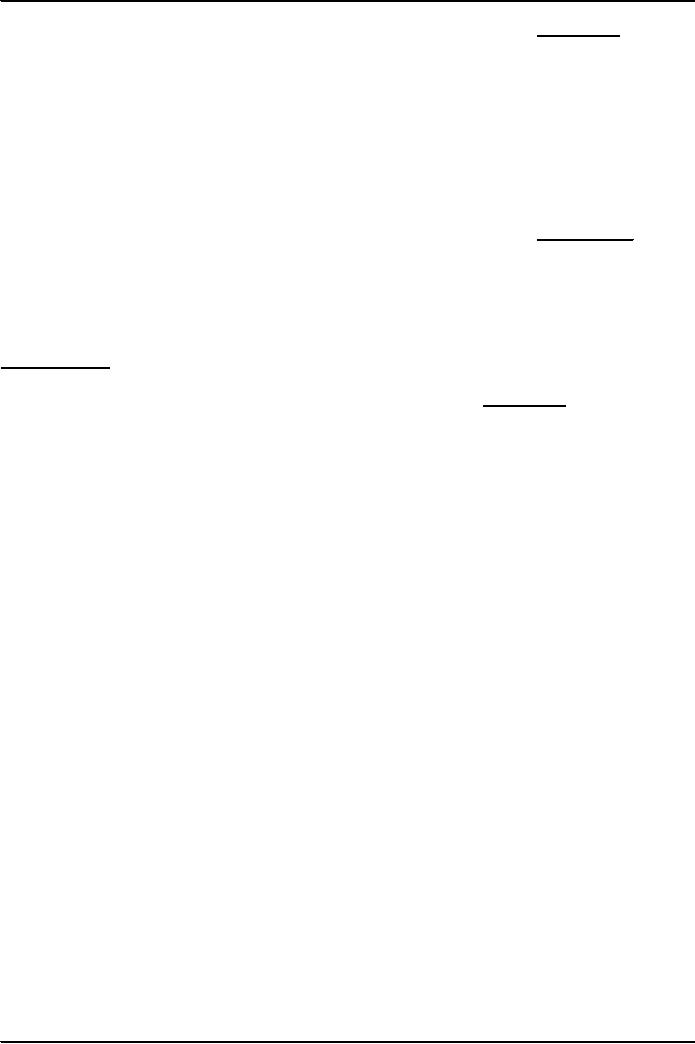
Taxation
Management FIN 623
VU
-
Consideration received on disposal
(A)
(10,000
x 50) =
Rs.
500,000
-
Cost of acquisition (B)
(10,000
x 30) =
Rs.
300,000
- Capital
Gain (A-B)
Rs.
200,000
Since
shares held by the person for
more than one year therefore
under the provision of law
3/4th of the
gain
would be taxable.
Hence:
Taxable
Capital Gain=
200,000 x ¾ = Rs
150,000
Exercise
3:
On
01/10/2006, Mr. A had
acquired mining rights at a cost of Rs
2,000,000. On 01/02/2007, he
disposed
of the rights to
Mr. Y for consideration of Rs 5,000,000.
Calculate Capital Gain.
Solution
to Ex. 3:
Consideration
received on disposal
(A)
Rs.
5,000,000
Cost
of acquisition (B)
Rs.
2,000,000
Capital
Gain
Rs.
3,000,000
Exercise4:
On
01/01/2004, M/s XYZ Pvt. Ltd.
purchased 5000 shares of a
public limited company at a
price of Rs
100
per share. On 10/05/2006, the
company disposed of these
shares at a price of Rs 150
per share.
Compute
taxable gain on disposal of
these shares.
Solution
to E 4:
Consideration
received on disposal
(A)
Rs.
750,000
Cost
of acquisition (B)
Rs.
500,000
Capital
Gain
Rs.
250,000
Since
Capital assets held by the person for
more than one year therefore
under the provisions of law 3/4th
of the
gain would be taxable.
Hence,
Taxable
Capital Gain =
250,000 x ¾ = Rs 187,500
However,
in this case, gain shall not
be taxable since exemption under clause
110 of part 1 of 2nd schedule
has
been granted on gain on
account of disposal of shares of a
public limited
company.
75

Taxation
Management FIN 623
VU
MODULE
10
LESSON
10.39
INCOME
FROM OTHER SOURCES (SECTION
39)
Incomes
not covered by any given
heads of income are covered
under this head.
Some
types covered under the head `Income
from other Sources'
Income
from Dividends
Income
from Royalty
Profit
on debt
Profit,
yield, interest, premium etc. received as
well as accrued.
However,
Rental income (Leasing)
received by a bank shall be `Income from
Business' not "Income
from
other sources'.
Any
amount received by bank from Mutual
Funds shall be taxed under the
head `Income from
Business'
not
under `Income from other
sources'.
Profit
derived from National Saving
Scheme is covered under the head `Income
from other sources'.
Other
Miscellaneous Incomes Covered Under
the Head `Income From Other
Sources'
Income
from:
Annuities
including annuities paid to a lender of
trademark.
Pension
Income
arising out of exploration rights
(exploration of oil fields.
Income
on account of interest- free loans
(Over Bench mark
rate).
Sum
paid for vacating premises
shall be treated as income of
recipient.
Other
Specific Items Covered Under the
Head Income From Other
Sources:
Sum
received not through
permissible banking channels on
account of loans, Advances,
Gifts, and
Deposits
for issuance of Shares of
companies offered for public
subscription.
Sec.
39(3): if above sums
received:
Otherwise
than through crossed bank
cheque
Otherwise
than through banking channel
or from a person not holding
National Tax Number
shall
be
treated as income chargeable to tax under
the head `Income from Other
Sources' for the tax
year
in which it was
received.
Exception
to above:
Sub
Sec. (4): sub
Section 3 of section 39 shall
not apply to an advance payment
for the sale of
goods
or supply of services.
Advances
received from customers in connection
with sale of goods &
services are not to
be
included
/added to income.
However,
advances received against execution of
contract or any other purposes
shall be included
to
income if amount not received
through crossed bank cheques or
through permissible
banking
channels.
Unexplained
Investments
Sec.
111 unexplained income or
assets
Where
A
person has made an
investment,
Any
amount credited to person's books of
account
A
person has incurred expenditure
A
person has made an
investment,
Any
amount credited to person's books of
account
A
person has incurred expenditure.
Sec.
III unexplained income or
assets
But no
reasonable explanation offered regarding
sources of fund the amount as
(a), (b) and (c) above
shall
be included in
person's income chargeable to
tax.
Sub
Sec. 1 of Sec. 111 does
not apply to any amount of Foreign
Exchange remitted from
outside
Pakistan
through normal banking
channels that is en-cashed
into Pak. Rupees by a
scheduled Bank and
encashment
certificate from such bank is produced to
that effect.
76

Taxation
Management FIN 623
VU
Sub
Sec. 1 of Sec 111 does not
also apply to any unexplained amount relating to a
period beyond pre-
ceding
five tax years.
Immune
(Exempted) Investments/Income
Private
foreign Currency Accounts
Three
years Foreign Currency
Bearer Certificates
Rupees
withdrawn or assets created
out of:
Withdrawal
from US Dollar Bearer
Certificates,
Withdrawal
from F.C. Accounts
Encashment
of foreign exchange bearer
certificates
Admissible
Deductions:
Expenditure
incurred to derive income chargeable to
tax.
A
person receiving any profit on
debt chargeable to tax under the head
Income from Other
Sources'
shall
be allowed a deduction for any Zakat paid
by the person at the time the profit is paid to
the
person,
deducted at the time of making payment of
profit.
Depreciation
allowed as deduction.
77

Taxation
Management FIN 623
VU
MODULE
11
LESSON
11.39
56.
SET
OFF OF LOSSES
(1)
Subject to sections 58 and
59, where a person sustains
a loss for any tax year
under any head
of
income specified in section
11, the person shall be
entitled to have the amount of the
loss
set
off against the person's
income, if any, chargeable to tax under
any other head of
income
for
the year.
(2)
Except as provided in this Part, where a
person sustains a loss under a
head of income for a
tax
year that cannot be set off
under sub-section (1), the person
shall not be permitted
to
carry
the loss forward to the next tax
year.
(3)
Where, in a tax year, a person
sustains a loss under the head
"Income from Business" and
a
loss
under another head of income, the loss
under the head "Income from
Business shall be
set
off last.
57.
Carry
forward of Business Losses
(1)
Where a person sustains a
loss for a tax year under the
head "Income from
Business"
(other
than a loss to which section
58 applies) and the loss cannot be
wholly set off under
section
56, so much of the loss that
has not been set
off shall be carried forward
to the
following
tax year and set off
against the person's income
chargeable under the head
"Income
from Business" for that
year.
(2) If
a loss sustained by a person
for a tax year under the head
"Income from Business" is
not
wholly
set off under sub-section
(1), then the amount of the loss
not set off shall be
carried
forward
to the following tax year and applied as
specified in subsection (1) in
that year, and
so on,
but no loss can be carried
forward to more than six tax
years immediately succeeding
the tax
year for which the loss
was first computed.
(2A)
Where a loss, referred to in sub-section
(2), relating to any assessment
year commencing on
or after
1st day of July,
1995, and ending on the 30th day of June 2001, is
sustained by a
banking
company wholly owned by the Federal
Government as on first day of
June, 2002,
which
is approved by the State Bank of Pakistan
for the purpose of this sub-section,
the
said
loss shall be carried
forward for a period of ten
years.
(3)
Where a person has a loss
carried forward under this section
for more than one tax
year,
the
loss of the earliest tax year
shall be set off
first.
(4)
Where the loss referred to in sub-section
(1) includes deductions allowed under
sections 22,
23 and
24 that have not been
set off against income, the
amount not set off shall be
added
to the
deductions allowed under those sections
in the following tax year, and so on
until
completely
set off.
(5) In
determining whether a person's deductions under
sections 22, 23 and 24 have
been set
off
against income, the deductions allowed
under those sections shall be
taken into account
last.
57A.
Set off of business loss
consequent to Amalgamation
(1)
The accumulated loss under the
head "Income from Business"
(not being a loss to
which
section
58 applies) of an amalgamating company or
companies shall be set off
or carried
forward
against the business profits
and gains of the amalgamated
company and vice
versa
up to a
period of six tax years immediately
succeeding the tax year in which the
loss was first
computed in the
case of amalgamated company
amalgamating company or
companies.
(2)
The provisions of sub-section (4)
and (5) of section 57 shall,
mutatis
mutandis, apply
for the
purposes
of allowing unabsorbed depreciation of
amalgamating company or companies
in
the
assessment of amalgamated company
and vice versa
(3)
Where any of the conditions as
laid down by the State Bank of
Pakistan or the Securities
and
Exchange
Commission of Pakistan or any court, as
the case may be, in the
scheme of
amalgamation,
are not fulfilled, the set
off of loss or allowance for
depreciation made in any
tax
year of the amalgamated company or the
amalgamating company or companies
shall be
deemed
to be the income of that amalgamated
company or the amalgamating company
or
78

Taxation
Management FIN 623
VU
companies,
as the case may be, for the
year in which such default
is discovered by the
Commissioner
or taxation officer, and all
the provisions of this 0rdinance shall
apply
accordingly.
59.
Carry forward of Capital
Losses
(1)
Where a person sustains a
loss for a tax year under the
head "Capital Gains"
(hereinafter
referred to as a
"capital loss"), the loss
shall not be set off
against the person's income,
if
any,
chargeable under any other
head of income for the year,
but shall be carried forward
to
the
next tax year and set
off against the capital
gain, if any, chargeable under the
head
"Capital
Gains" for that
year.
(2) If
a capital loss sustained by a
person for a tax year under the
head "Capital Gains" is
not
wholly
set off under sub-section
(1), then the amount of the loss
not set off shall be
carried
forward
to the following tax year, and so
on, but no loss shall be
carried forward to
more
than
six tax years immediately succeeding the
tax year for which the loss
was first computed.
(3)
Where a person has a loss
carried forward under this section
for more than one tax
year, the
loss
of the earliest tax year shall be
set off first.
Deductible
Allowances:
60.
Zakat
(1) A
person shall be entitled to a deductible
allowance for the amount of any
Zakat paid by the
person
in a tax year under the Zakat and
Ushr Ordinance, 1980 (XVIII of
1980).
(2)
Sub-section (1) does not
apply to any Zakat taken
into account under subsection
(2) of
section
40.
(3)
Any allowance or part of an
allowance under this section for a tax
year that is not able to
be
deducted
under section 9 for the year
shall not be refunded, carried
forward to a subsequent
tax
year, or carried back to a
preceding tax year.
61.
Charitable donations:
(1) A person shall be
entitled to a tax credit in respect of
any sum paid, or any
property given by
the
person in the tax year as a donation to
a)
any board of education or any
university in Pakistan established by, or under, a
Federal
or a
Provincial law;
b)
any educational institution,
hospital or relief fund established or
run in Pakistan by
Federal
Government or a Provincial Government or
a local authority; or
c)
any non-profit organization.
Sub-section
(1) substituted by Finance
Act, 2003 which previously
read as follows:
A
person shall be entitled to a tax credit
for a tax year in respect of
any amount paid, or
property
given by the person in the tax year as a
donation to a non-profit
organization."
(2)
The amount of a person's tax credit allowed under
sub-section (1) for a tax
year shall be
computed
according to the following formula,
namely:
(A/B) x
C
Where:
A
is
the amount of tax assessed to the person
for the tax year before allowance of
any tax credit under
this
Part;
B
is
the person's taxable income
for the tax year; and
C
is
the lesser of:
(a)
the total amount of the person's donations referred to
in subsection (1) in the year,
including
the
fair market value of any
property given; or
(b)
where the person is:
(i)
an
individual or association of persons,
thirty per cent of the
taxable income of
the
person for the year;
or
(ii)
a
company, fifteen per cent of the
taxable income of the person
for the year.
(3)
For the purposes of clause
(a) of component C
of
the formula in subsection (2), the
fair
market
value of any property given
shall be determined at the time it is given.
(4) A
cash amount paid by a person as a
donation shall be taken into
account under clause (a)
of
component
C
of
sub-section (2) only if it
was paid by a crossed cheque drawn on a
bank.
79

Taxation
Management FIN 623
VU
(5)
The Central Board of Revenue may
make rules regulating the procedure of
the grant of
approval under
sub-clause (c) of clause
(36) of section 2 and any
other matter
connected
with,
or incidental to, the operation of this
section.
62.
Investment in shares
(1) A
person other than a company
shall be entitled to a tax credit for a
tax year in respect of
the
cost of acquiring in the year new
shares offered to the public by a
public company listed
on a
stock exchange in Pakistan
where the person other than
a company is the original
allottee of the
shares or the shares are
acquired from the Privatization
Commission of
Pakistan.
(2)
The amount of a person's tax credit allowed under
sub-section (1) for a tax
year shall be
computed
according to the following formula,
namely:
(A/B) x
C
Where:
A
is
the amount of tax assessed to the person
for the tax year before allowance of
any tax credit
under this
Part;
B
is
the person's taxable income
for the tax year; and
C
is
the lesser of:
(a)
the total cost of acquiring the shares
referred to in sub-section (1) in the
year;
(b) ten
per cent of the person's
taxable income for the year;
or
(c)
two hundred thousand
rupees.
(3)
Where:
a)
a
person has been allowed a tax credit
under sub-section (1) in a tax year
in
respect
of the purchase of a share;
and
b) the person
has made a disposal of the
share within twelve months of the
date
of
acquisition,
The
amount of tax payable by the person for
the tax year in which the shares
were
disposed
of shall be increased by the amount of the credit
allowed.
63.
Contribution to an Approved Pension
Fund
(1) An
eligible person as defined in sub-section
(19A) of section 2 deriving
income chargeable
to tax under the
head "Salary" or the head
"Income from Business" shall
be entitled to a tax
credit
for a tax year in respect of
any contribution or premium paid in the
year by the person
in approved
pension fund under the Voluntary
Pension System Rules,
2005.
(2)
The amount of a person's tax credit allowed under
sub-section (1) for a tax
year shall be
computed
according to the following formula,
namely:
(A/B) x
C
Where:
A
is
the amount of tax assessed to the person
for the tax year, before allowance of
any tax credit
under this
Part;
B
is
the person's taxable income
for the tax year; and
C
is
the lesser of
(a)
the total contribution or premium referred to in
sub-section (1) paid by the person in
the
year;
or
(b)
twenty per cent of the eligible
person's taxable income for
the relevant tax year; Provided
that
an eligible person (words "a person"
substituted by Finance Bill
2006) joining the
pension
fund at the age of forty-one
years or above, during the
first ten years starting
from
July
1, 2006 (words "of the
notification of the Voluntary Pension
System Rules, 2005"
substituted
by Finance Bill 2006), shall
be allowed additional contribution of 2%
per annum
for
each year of age exceeding
forty years. Provided
further that the total
contribution
allowed to
such person shall not
exceed 50% of the total taxable
income of the preceding
year;
or
(c)
five hundred thousand
rupees.
(3)
The transfer by the members of approved
employment pension or annuity scheme or
approved
occupational
saving scheme of their existing
balance to their individual
pension accounts
maintained
with one or more pension
fund managers shall not
qualify for tax credit under this
section.
63.
Retirement annuity scheme
80

Taxation
Management FIN 623
VU
(1)
Subject to subsection (3), a
resident individual deriving
income chargeable to tax under
the
head "Salary" or the head
"Income from Business" shall
be entitled to a tax credit for
a tax
year in respect of any
contribution or premium paid in the year by the
person under
a contract of
annuity scheme approved by , Securities
and Exchange Commission
of
Pakistan
of an insurance company duly
registered under the Insurance Ordinance,
2000
(XXXIX of
2000), having its main object the
provision to the person of an annuity in
old
age.
(2)
The amount of a resident individual's tax
credit allowed under sub-section (1) for
a tax
year
shall be computed according to the
following formula,
namely:
(A/B) x
C
Where:
A
is
the amount of tax assessed to the person
for the tax year before allowance of
any tax credit
under this
Part;
B
is
the person's taxable income
for the tax year; and
C
is
the lesser of:
a) the
total contribution or premium referred to in
sub-section (1) paid by the
individual
in the year;
b) ten
(Substituted for "five" by
Finance Act, 2003) per
cent of the person's
taxable
(Substituted
for "total" by Finance Act,
2003) income for the tax
year; or
c)
two (Substituted for
"one" by Finance Act, 2003)
hundred thousand
rupees.
(3) A
person shall not be entitled
to a tax credit under sub-section (1) in
respect of a contract
of
annuity which provides:
(a)
for the payment during the
life of the person of any amount
besides an annuity;
(b)
for the annuity payable to the
person to commence before the person
attains the age
of sixty
years;
(c)
that the annuity is capable, in
whole or part, of surrender, commutation,
or
assignment;
or
(d)
for payment of the annuity
outside Pakistan.
64.
Profit on
debt:
(1) A
person shall be entitled to a tax credit
for a tax year in respect of
any profit or share
in
rent and share in appreciation
for value of house paid by the
person in the year on a
loan
by a scheduled bank or non-banking
finance institution regulated by the
Security
and
Exchange Commission of Pakistan or
advanced by Government or the
local
authority
or a statutory body or a public company
listed on a registered stock
exchange
in
Pakistan where the person
utilizes the loan for the construction of a
new house or
the acquisition of
a house.
Sub-Section
(1) substituted by Finance
Act, 2003 which previously
read as follows:
"(1)
A person shall be entitled to a tax
credit for a tax year in respect of
any profit or
share
in rent and share in appreciation of
value of house paid by the person in the
year on a
loan
by a scheduled bank under a house finance
scheme approved by the State Bank
of
Pakistan
or advanced by Government, the local
authority or House Building
Finance
Corporation
where the person utilizes
the loan for the construction of a new
house or the
acquisition of a
house."
(2)
The amount of a person's tax credit allowed under
sub-section (1) for a tax
year shall be
computed
according to the following formula,
namely:
(A/B) x
C
Where:
A
is
the amount of tax assessed to the person
for the tax year before allowance of
any tax credit
under this
Part;
B
is
the person's taxable income
for the tax year; and
C
is
the lesser of:
(a)
the total profit referred to in
sub-section (1) paid by the person in the
year;
81

Taxation
Management FIN 623
VU
(b)
forty (substituted "twenty
five" by Finance Act, 2003)
per cent of the
person's
taxable
(Substituted for "total" by
Finance Act, 2003) income
for the year; or
(c)
five (Substituted for
"one" by Finance Act, 2003)
hundred thousand
rupees.
(3) A
person is not entitled to tax credit
under this section for any
profit deductible under
section
17.
Common
Rules
Income
of joint owners Section
66
Where
any property is own by two
or more persons and there
respective shares are
definite and
ascertainable:
a) the persons shall
not be assessed as an AOP in
respect of the property;
and
b) the share of each
person in the income from
property for a tax year
shall be taken into
account
in the computation of persons taxable
income for that
year.
This
section shall not apply in
computing income chargeable under the
head "Income from
Business"
Apportionment
of deductions Section 67
Where
the expenditure relates to:
The
derivation of more than one
head of income; or
The
derivation of income comprising of
taxable income and any
income under final tax
regime
The
derivation of income chargeable to tax
under a head of income and to
some other purpose,
The
expenditure shall be apportioned on any
reasonable basis taking
account of the relative nature
and
size
of the activities to which the amount
relates.
Fair
Market Value Section
68
Fair
market value of any property
or rent, asset, service, benefit or
perquisites at a particular time
shall
be the
price which these mentioned
above would ordinarily fetch on
sale or supply in the open market
at
that
time.
Receipt
of Income Section
69:
A
person shall be treated as having
received an amount, benefit, or
perquisites if it is:
(a)
actually
received by the person
(b)
applied on behalf of the
person, at the instruction of the person
or under any law; or
(c) made available to
the person.
Recouped
expenditure: Section 70
where
a person has been allowed a deduction
for any expenditure or loss incurred in a
tax year in the
computation
of persons income chargeable to tax under
a head of income and,
subsequently, the person
has
received
in cash or in kind, any amount in
respect of such expenditure or loss, the
amount so received shall
be included in the
income chargeable under the head
for the tax year in which it is
received.
Currency
Conversion: Section 71
Every
amount taken into account under this
ordinance shall be in
Rupees
Where
an amount is in a currency other than
Rupees, the amount shall be converted to the
Rupees at
the
State Bank of Pakistan exchange
rsate applicable on that
date.
Cessation
of Source of Income: Section
72
Where:
a) any income
is derived by a person in a tax year from
any business, activity, investment or
other
source
that has ceased either before the
commencement of the year or during the
year; and
b) if the income
has been derived before the business,
activity, investment or other
source
ceased,
it would have been
chargeable to tax under this
ordinance,
This ordinance
shall apply to the income on the basis
that the business, activity, investment
or other
source
had not ceased at the time the
income was derived.
Rules
to prevent double Derivation and double
Deductions: Section 73
Sec
73
(1)
Where:
(a)
any amount is
chargeable to tax under this ordinance on the
basis that it is receivable,
the
amount
shall not be chargeable
again on the basis that it is
received; or
(b)
any amount is
chargeable to tax under this ordinance on the
basis that it is received,
the
amount
shall not be chargeable
again on the basis that it is
receivable; or
82

Taxation
Management FIN 623
VU
(2)
For the purposes of this
Ordinance,
Where:
(a)
any expenditure is deductible under this Ordinance on the
basis that it is payable,
the
expenditure
shall not be deductible again on the
basis that it is paid; or
(b)
any expenditure is deductible under this Ordinance on the
basis that it is paid, the
expenditure
shall not be deductible again on the
basis that it is
payable.
83
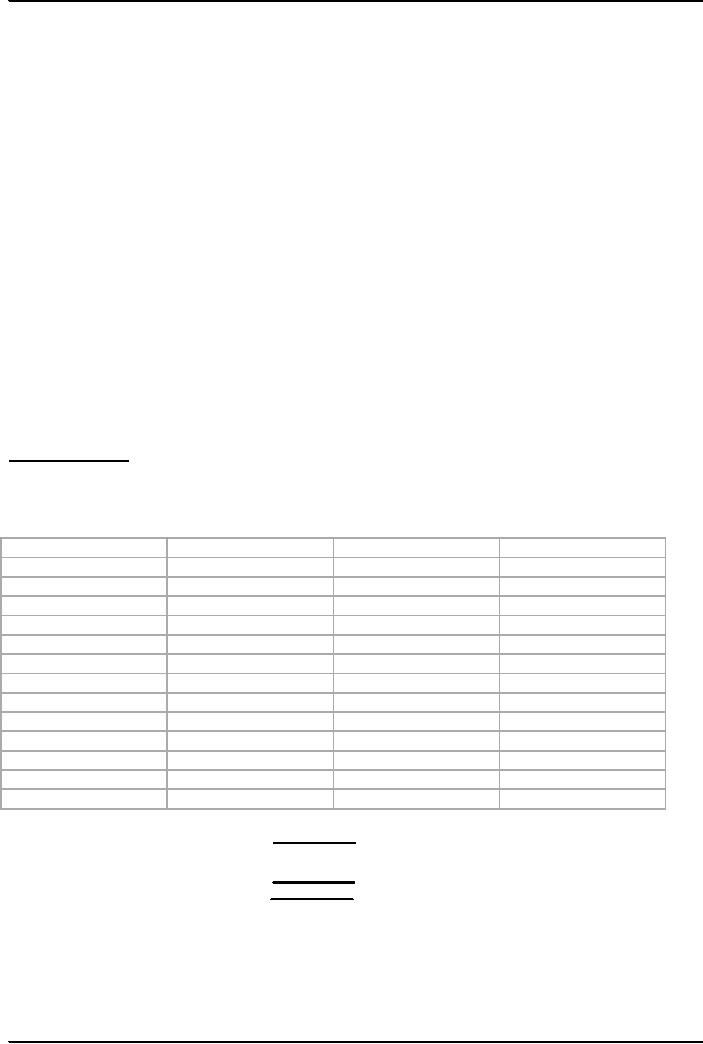
Taxation
Management FIN 623
VU
MODULE
12
LESSON
12.39
TAXATION
OF INDIVIDUALS
AND
TAXATION
OF ASSOCIATION OF PERSONS
Exercise1-Sole
Proprietorship
Mr. A
is running business as sole
proprietor. From the following
information/data relevant to tax
year
2007.
Opening
Stock
Rs.800,000
Purchases
Rs.1,000,000
Sales
Rs.2,000,000
Carriage
inwards
Rs.30,000
Closing
stock
Rs.800,000
Electric
bill of office paid
Rs
18,000
Telephone
bill paid
Rs
20,000
Rent
of office
Rs
120,000
Stationary
for office
Rs
4000
Postages
Rs
3000
Salaries
to staff
Rs
200,000
Advertisement
expenses
Rs
10,000
Advance tax
paid
Rs
60,000
Compute
taxable income and tax
thereon.
Solution
to Ex. 1:
Tax
Payer: Mr. A
.
Tax
Year: 2007
Sole
proprietorship
NTN:
000111
Trading
and Profit & Loss Account
In
Rs
Opening
balance
800,000
Sale
2,000,000
Purchases
1,000,000
Closing Stock
800,000
Carriage
inward
30,000
Gross
profit
970,000
Total
2,800,000
2,800,000
Electricity
18,000
Telephone
20,000
Office
rent
120,000
Stationary
4,000
Postages
3,000
Salaries
200,000
Advertising
10,000
Net
profit
595,000
Total
970,000
970,000
Tax
payable 595,000 x
12.50%=
Rs.
74,375
Advance tax
paid
Rs
60,000
Tax
payable
Rs
14,375
Tax
paid with return
Rs
14,375
Tax
payable / refundable
Nil
Exercise
2: Taxation of Association of
Persons
From
the following information/ data
for tax year 2007 regarding
M/S XYZ brothers, a partnership firm,
compute
taxable income and tax
liability of the firm as well as
individual members.
This
firm comprises of three
partners Mr. X, Mr. Y and
Mr. Z, each partner has
equal share in
profits.
Net
profit of M/S XYZ brothers for tax year
2007 is worked out as Rs
900,000.
Mr. Z
has also earned income
amounting Rs 200,000 from other
sources.
84
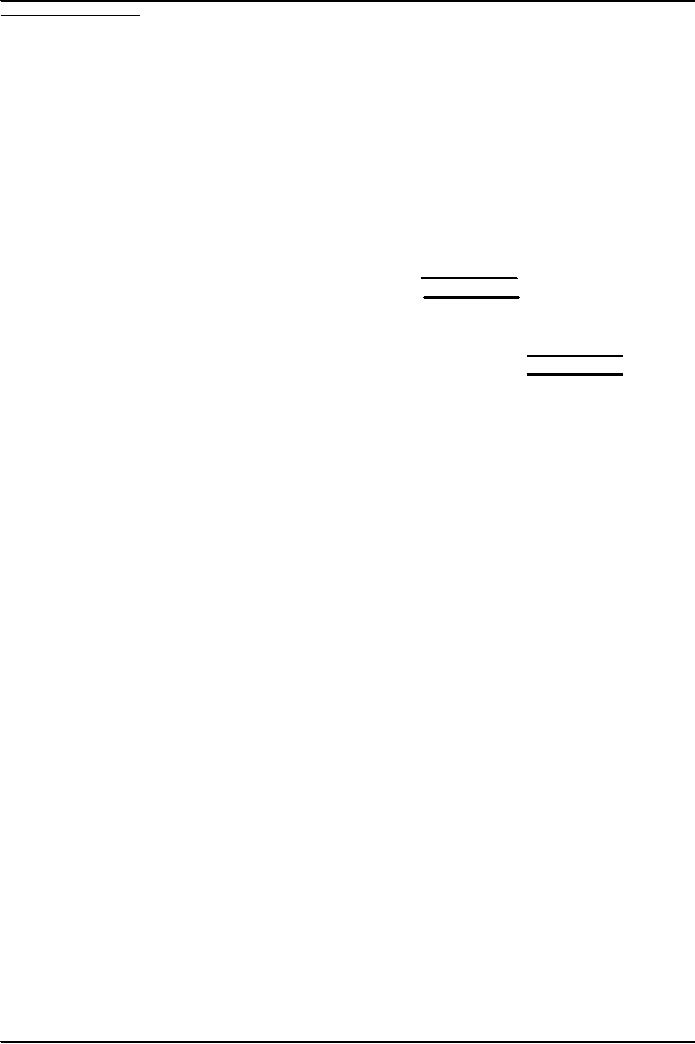
Taxation
Management FIN 623
VU
Solution
Exercise 2:
Tax
Payer: M/S. XYZ
Tax
Year: 2007
Partnership
Firm
NTN:
000111
Net
profit (taxable
income)
= Rs
900,000
Tax
liability of firm
(900,000
x 17.50 %*)
= Rs
157,500
*Tax
rate at serial # 12 for
income range Rs 800,000 to
1,000,000 is applied.
Note:
Tax
liability is the obligation of firm
and not of the partners.
However, if partner has income
from any
other
source, his share of income
from partnership is added to taxable
income only for rate
purposes.
Share
of profit of each member Mr.
X, Mr. Y and Mr. Z Rs
300,000 each.
Computation
of tax liability of Mr.
Z
Income
from other sources
Rs200,000
Share
of profit of Mr. Z from firm
M/s XYZ brothers
(Add
for rate purposes
only)
Rs
300,000
Taxable
income
Rs
500,000
Tax
payable (500,000 x 10%)
Rs
50,000
Subtract
tax liability due to addition of Rs
300,000 for rate
purposes
(50,000/
500,000 x 300,000 =
30,000)
Rs
30,000
Tax
payable by Mr. Z
Rs
20,000
(50,000-30,000=20,000)
If Rs
300,000 would have not
been added for rate
purposes, Mr. Z would have
paid tax at the rate of 4 %
that
is 200,000 x 4% = 8,000 instead of Rs
20,000.
85
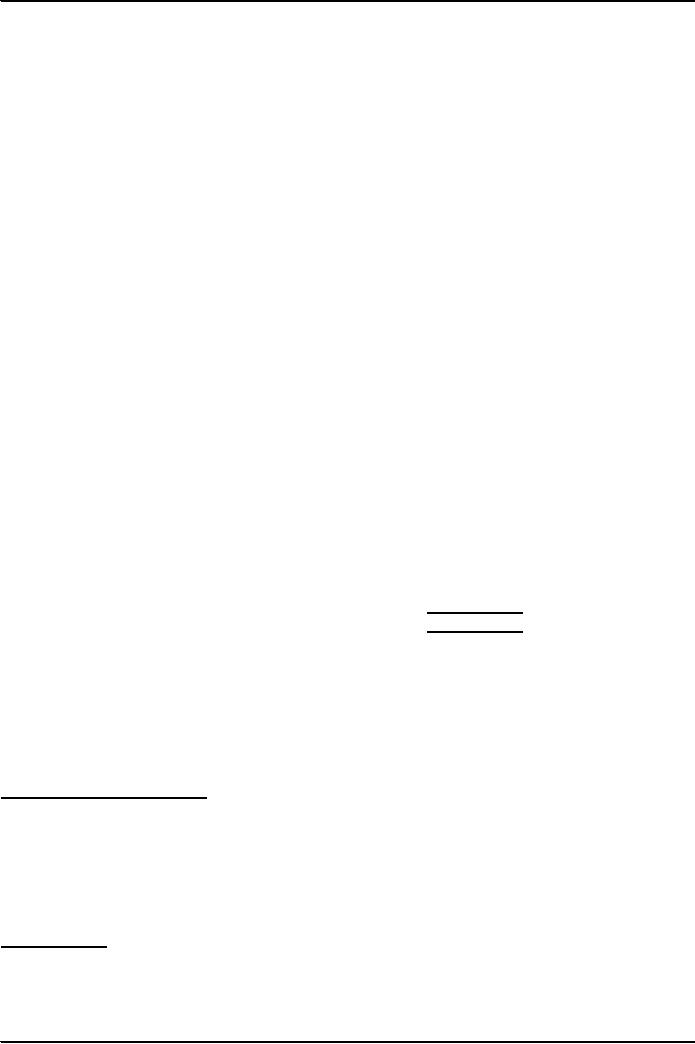
Taxation
Management FIN 623
VU
MODULE
13
LESSON
13.39
TAXATION
OF COMPANIES
Minimum
Tax on Resident Companies Sec
113
Resident
Company is subjected to minimum tax @
0.50% of its turnover for a
tax year, even in
cases
where the company sustains
loss.
Turnover
under this section means:
the
gross receipts, exclusive of
sales tax and central excise
duty or any trade discounts
shown on
invoice
or bills, derived from the sale of
goods;
the
gross fees for the rendering of
services or giving benefits,
including commissions;
the
gross receipts from the
executions of contracts;
and
the
company's share of the amounts
stated above of any
association of persons of which
the
company
is a member
Exercise-1
M/S XYZ
(PVT) Ltd. filed return
for tax year 2007, declaring
taxable income of Rs.
1,300,000 and paid
entire
liability of tax. On scrutiny of record
by tax authorities, it came to their notice
that following
amounts
have
been paid by Cash. In the light of this
information/data compute tax liability of
said company for tax
year-2007.
Salary
Rs.
30,000
Office
Rent
Rs.
120,000
Professional
Fee
Rs.
80,000
Postages
Rs.
8,000
Freight
paid
Rs.
9,000
Electricity
bill
Rs.
7,000
Telephone
Rs.
5,000
Penalty
Rs.
9,000
Solution
of E-1
Add
Back Inadmissible Deductions Under
Section 21
Salary
paid by cash
Rs.
30,000
Rent
of office paid by cash
Rs.
120,000
Professional
fee paid by cash
Rs.
80,000
Total
Additions
Rs.
230,000
Declared
income
Rs.
1,300,000
Tax
already paid (1,300,000 x 35%)
Rs.
455,000
Additions
made U/S 21
Rs.
230,000
Tax
payable on additions
Rs.
80,500
Note:
Additions
on account of rest of payments,
although by cash not required to be
added back as provided
in
section
21(L)
Computation
of Depreciation
Exercise
2
M/S
A.K. Brothers is a partnership firm. In the books of
accounts the following information/data
has been
provided
with respect to plant and
machinery. Compute normal depreciation and
initial allowance in the
light
of the given information.
Book
value of plant and machinery
as on 01-07-2006
Rs.
1,800,000
Machinery
disposed of during the year
with book value.
Rs.
600,000
Additions
of eligible depreciable asset during the
year
Rs
1,000,000
Solution
of E-2
Tax
Payer: A.K. Brothers
Tax
Year: 2007
Residential
Status: Resident
NTN:
000111
Particulars
Book
value
Depreciation
Opening
W.D.V
1,800,000
----
Disposals
(600,000)
----
86
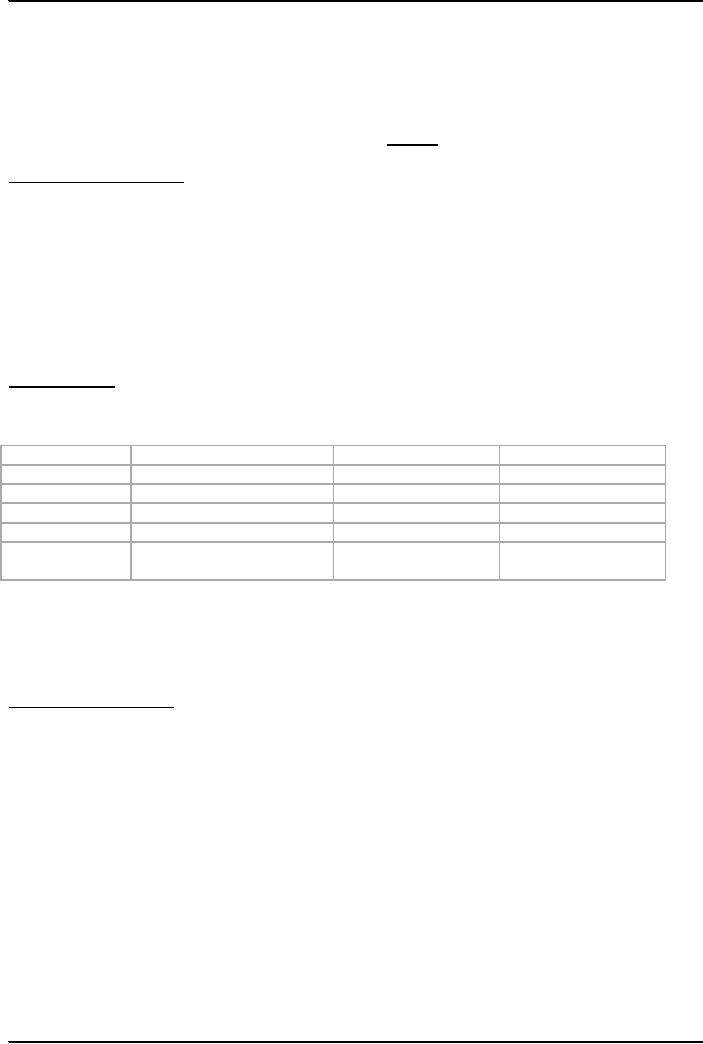
Taxation
Management FIN 623
VU
Balance
W.D.V
1,200,000(X)
----
Additions
during Year
1,000,000
Initial
allowance
@ 50% on
1,000,000
500,000
Balance
book value
(Y)
500,000
Total
book value (X+Y)
1,700,000
Normal
Depreciation@ 15%
255,000
Total
Depreciation
755,000
On
Speculation Business
Exercise
3
M/s
ABC Ltd. A manufacturing company
has furnished the following accounting
information for tax
year
2007.
Compute taxable income and tax
thereon:
-
Gross Income from normal
business
Rs.2,500,000
- Expenditures on
normal business
Rs.
1,000,000
-
Gross income from
speculation business
Rs.
600,000
- Expenditures on
speculation business
Rs.300,000
- Loss
carried forward on normal
business
Rs.
200,000
- Loss
Carried forward on speculation
business
Rs.
900,000
- Advance
Tax Paid
Rs.
200,000
Solution
of E-4
Tax
Payer: ABC Ltd.
Tax
Year: 2007
Residential
Status: Resident
NTN:
000111
Computation
of taxable income and tax
thereon:
In
Rs.
Particulars
Speculation
Operations
Normal
Business
Total
Gross
Income
600,000
2,500,000
3,100,000
Expenditures
(300,000)
(1,000,000)
(1,300,000)
Net
Income
300,000
1,500,000
1,800,000
C/F
Loss
(900,000)
(200,000)
(1,100,000)
Taxable
Income
(600,000)
1,300,000
---
Note-1
Taxable
Income:
Normal
business Rs.1,300,000
Tax
payable= (1,300,000 x 35%) = Rs.
455,000
Note-1:
Loss
of Rs. 600,000 from
speculation business can not
be set off against business
income, it can be set
off
against
speculation business income,
and hence this loss of Rs.
600,000 shall be carried
forward to next year.
Taxation
of Companies
Exercise-4
M/S XYZ is a
limited company, running a
chain of hospitals. The
company filed tax return along
with
relevant accounts/
documents for tax year 2006.
This return has been
selected for total audit. As a
taxation
officer,
work out taxable income
and tax liability of the said
company for tax year
2006.
Medicines
purchased Rs.
1,000,000
Ambulances-
running expenses.
Rs.
300,000
Depreciation on
ambulances
Rs.
40,000
Depreciation on
other assets
Rs.
60,000
Salaries
paid through bank accounts of
employees
Rs.
300,000
Unsupported
payment for purchase of
stationery
Rs.
12,000
Depreciation on
account of car owned by director
and in his personal use
Rs. 40,000
Payment
of legal fee by cash
Rs.
60,000
Received
payments from corporations on the panel
of the hospitals
Rs.
6,000,000
Other
receipts
Rs.
2,000,000
Gain
on sale of a vehicle
Rs.
200,000
Purchase
of X-Ray machine for shown
as expense in revenue
account
Rs.
1,000,000
Withholding
tax deductions
Rs.
525,000
87
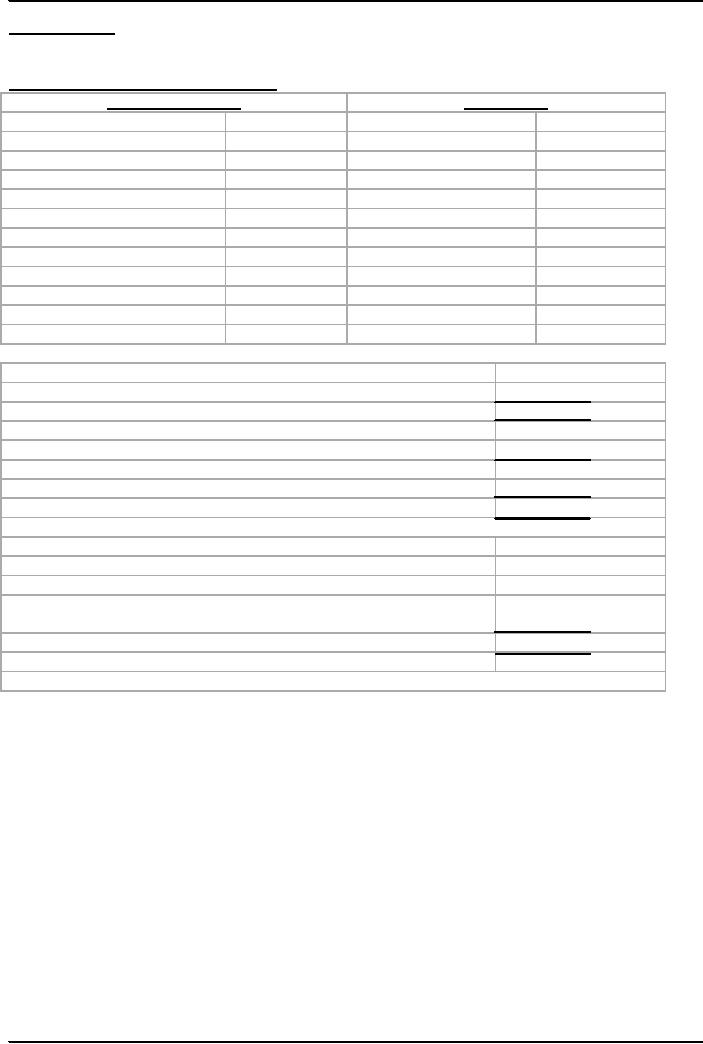
Taxation
Management FIN 623
VU
Loss
carried forward from tax
year 2005
Rs.
1,200,000
Solution
of E-4
Tax
Payer: M/S XYZ Ltd.
Tax
Year: 2006
Resident
Company
NTN:
000111
Revenue
Account as Submitted by Co.
RECEIPTS
EXPENDITURES
Particulars
Amount
in Rs. Particulars
Amount
in Rs.
Medicines
1,000,000
From
Corporations
6,000,000
Ambulances
300,000
Other
Receipts
2,000,000
Depreciation
(Ambulances)
40,000
Gain
on Sale of Vehicles
200,000
Depreciation
Others
60,000
Salaries
thru bank
300,000
Unsupported
PAMT
12,000
Depreciation on
personal car
40,000
Legal
Fee by cash
60,000
X-Ray
machine
1,000,000
Net
Profit
5,388,000
8,200,000
8,200,000
Computation
of Tax Payable:
Net
Profit as computed by Co.
5,388,000
Less
set off of c/f losses
(1,200,000)
Taxable
Income
4,188,000
Tax
Payable 4,188,000x35%
1,465,800
Less
withholding Tax
deductions
525,000
Balance
Tax Payable
940,800
Tax
Paid with Return
940,800
Tax
Payable/Refundable
NIL
Additions
by Taxation Officer on account of inadmissible
expenses:
Unsupported
payments
12,000
Depreciation
claimed on personal car of
Director
40,000
Payment
of legal fee by cash
60,000
Purchase
of X-Ray machine ( to be capitalized,
balance sheet item as such
1,000,000
not to
be shown in Revenue
a/c)
Total
additions
1,112,000
Tax
payable on account of add
backs (1,112,000 x 35%=
389,200)
389,200
The
company shall have to pay
tax amounting Rs 389,200.
88

Taxation
Management FIN 623
VU
MODULE
14
LESSON
14.39
Presumptive
income
Taxation
of permanent establishment
(pe)
Presumptive
Income:
Under
normal tax regime, income tax is
chargeable on taxable income
but under some exceptional
circumstances,
the income tax shall be charged on
gross receipts. This is also
called as presumptive tax
regime.
Under following situations the tax
will be charged on gross
receipts basis.
Tax
on dividends:
(a)
Subject to this
Ordinance, a tax shall be imposed, at the
rate specified in Division III of
Part I of
the
First Schedule, on every
person who receives a
dividend from a
company.
(b)
The tax
imposed under sub-section (1) on a
person who receives a
dividend shall be computed
by
applying the relevant rate of tax to the
gross amount of the dividend.
(c) This section
shall not apply to a dividend
that is exempt from tax under this
Ordinance.
6.
Tax
on Certain Payments to Non-Residents:
(1)
Subject to this Ordinance, a tax shall be
imposed, at the rate specified in
Division IV of Part I of
the
First Schedule, on every non-resident
person who receives any
Pakistan-source royalty or
fee
for
technical services.
(2)
The tax imposed under sub-section
(1) on a non-resident person shall be
computed by applying
the relevant
rate of tax to the gross amount of the
royalty or fee for technical
services.
(3)
This section shall not apply
to:
(a)
any royalty where the
property or right giving
rise to the royalty is effectively
connected
with a
permanent establishment in Pakistan of
the non-resident person;
(b)
any fee for technical
services where the services
giving rise to the fee are
rendered through
a
permanent establishment in Pakistan of
the non-resident person; or
(c)
any royalty or fee for
technical services that is
exempt from tax under this
Ordinance.
(4)
Any Pakistani-source royalty or
fee for technical services
received by a non-resident person
to
whom
this section does not apply by
virtue of clause (a) or (b) of
sub-section (3) shall be
treated
as
income from business
attributable to the permanent
establishment in Pakistan of the
person.
7.
Tax
on Shipping and Air Transport Income of a Non-Resident
Person
(1)
Subject to this Ordinance, a tax shall be
imposed, at the rate specified in
Division V of Part I of
the
First Schedule, on every non-resident
person carrying on the business of
operating ships or
aircraft as the
owner or chatterer thereof in respect
of
(a)
the gross amount received or receivable
(whether in or out of Pakistan) for the
carriage of
passengers,
livestock, mail or goods embarked in
Pakistan; and
(b) the
gross amount received or receivable in
Pakistan for the carriage of
passengers, livestock,
mail or
goods embarked outside
Pakistan.
(2)
The tax imposed under sub-section
(1) on a non-resident person shall be
computed by applying
the relevant
rate of tax to the gross amount referred to in
subsection (1).
(3)
This section shall not apply to
any amounts exempt from tax
under this Ordinance.
Taxation
of PE
105.
Taxation of a Permanent Establishment in Pakistan of a
Non-Resident Person.
(1)
The following principles shall apply in
determining the income of a permanent
establishment in
Pakistan
of a non-resident person chargeable to tax under the
head "Income from
Business",
namely:
(a)
The profit of the permanent
establishment shall be computed on the
basis that it is a
distinct
and separate person engaged
in the same or similar activities under the
same or
similar
conditions and dealing
wholly independently with the nonresident
person of which
it is a
permanent establishment;
(b)
subject to this Ordinance, there shall be
allowed as deductions any expenses
incurred for
the
purposes of the business activities of the
permanent establishment including
executive
and
administrative expenses so incurred, whether in
Pakistan or elsewhere;
(c) no
deduction shall be allowed for amounts
paid or payable by the permanent
establishment
to its
head office or to another permanent
establishment of the non-resident person
(other
89

Taxation
Management FIN 623
VU
than
towards reimbursement of actual
expenses incurred by the non-resident person
to
third
parties) by way of:
(i)
royalties,
fees or other similar
payments for the use of any
tangible or
intangible
asset by the permanent
establishment;
(ii)
compensation
for any services including
management services
performed
for
the permanent establishment; or
(iii)
profit
on debt on moneys lent to the
permanent establishment, except
in
connection
with a banking business;
and
(d) no
account shall be taken in the
determination of the income of a
permanent establishment
of
amounts charged by the permanent
establishment to the head office or to
another
permanent
establishment of the non-resident person
(other than towards
reimbursement of
actual
expenses incurred by the permanent
establishment to third parties) by
way of:
(i)
royalties,
fees or other similar
payments for the use of any
tangible or
intangible
asset;
(ii)
compensation
for any services including
management services performed
by
the
permanent establishment; or
(iii)
profit
on debt on moneys lent by the
permanent establishment, except
in
connection
with a banking
business.
(2) No
deduction shall be allowed in computing the
income of a permanent establishment
in
Pakistan
of a non-resident person chargeable to tax under the
head "Income from Business"
for
a tax
year for head office
expenditure in excess of the amount as bears to the
turnover of the
permanent
establishment in Pakistan the same
proportion as the non-resident's total
head office
expenditure
bears to its worldwide
turnover.
(3) In
this section, "head office
expenditure" means any
executive or general
administration
expenditure
incurred by the non-resident person outside
Pakistan for the purposes of
the
business
of the Pakistan permanent establishment
of the person, including:
(a)
any rent, local rates and
taxes excluding any foreign
income tax, current repairs,
or
insurance
against risks of damage or destruction
outside Pakistan;
(b)
any salary paid to an employee
employed by the head office
outside Pakistan;
(c)
any traveling expenditures of
such employee; and
(d)
any other expenditures which
may be prescribed
(4) No
deduction shall be allowed in computing the
income of a permanent establishment
in
Pakistan
of a non-resident person chargeable under the
head "Income from Business"
for:
(a)
any profit paid or payable by the
non-resident person on debt to finance the
operations
of the
permanent establishment; or
(b)
any insurance premium paid or payable by
the non-resident person in respect of
such
debt.
90
Table of Contents:
- AN OVERVIEW OF TAXATION
- What is Fiscal Policy, Canons of Taxation
- Type of Taxes, Taxation Management
- BASIC FEATURES OF INCOME TAX
- STATUTORY DEFINITIONS
- IMPORTANT DEFINITIONS
- DETERMINATION OF LEGAL STATUS OF A PERSON
- HEADS OF INCOME
- Rules to Prevent Double Derivation of Income and Double Deductions
- Agricultural Income
- Computation of Income, partly Agricultural,
- Foreign Government Officials
- Exemptions and Tax Concessions
- RESIDENTIAL STATUS & TAXATION 1
- RESIDENTIAL STATUS & TAXATION 2
- Important Points Regarding Income
- Geographical Source of Income
- Taxation of Foreign-Source Income of Residents
- Exercises on Determination of Income 1
- Exercises on Determination of Income 2
- SALARY AND ITS COMPUTATION
- Definition of Salary
- Significant points regarding Salary
- Tax credits on Charitable Donations
- Investment in Shares
- SALARY AND ITS COMPUTATION EXERCISES 1
- SALARY AND ITS COMPUTATION EXERCISES 2
- SALARY AND ITS COMPUTATION EXERCISES 3
- Tax treatment of Gratuity
- Gratuity Exercise
- PROVIDENT FUND
- Exemptions on Business income, Treatment of Speculation Business
- Deductions Allowed & Not Allowed
- Deductions: Special Provisions, Depreciation
- Methods of Accounting
- Taxation of Resident Company
- Taxation of Companies: Exercises
- Computation of Capital Gain
- Disposals Not Chargeable To Tax
- TAX RETURNS & ASSESSMENT OF INCOME UNIVERSAL SELF ASSESSMENT SCHEME
- Normal Assessment, USAS, Provisional Assessment, Best Judgment Assessment
- ADVANCE TAX COLLECTION & RECOVERY OF TAX PENALTIES & PROSECUTION
- What is Value Added Tax (VAT)?
- SALES TAX
- SALES TAX RETURNS